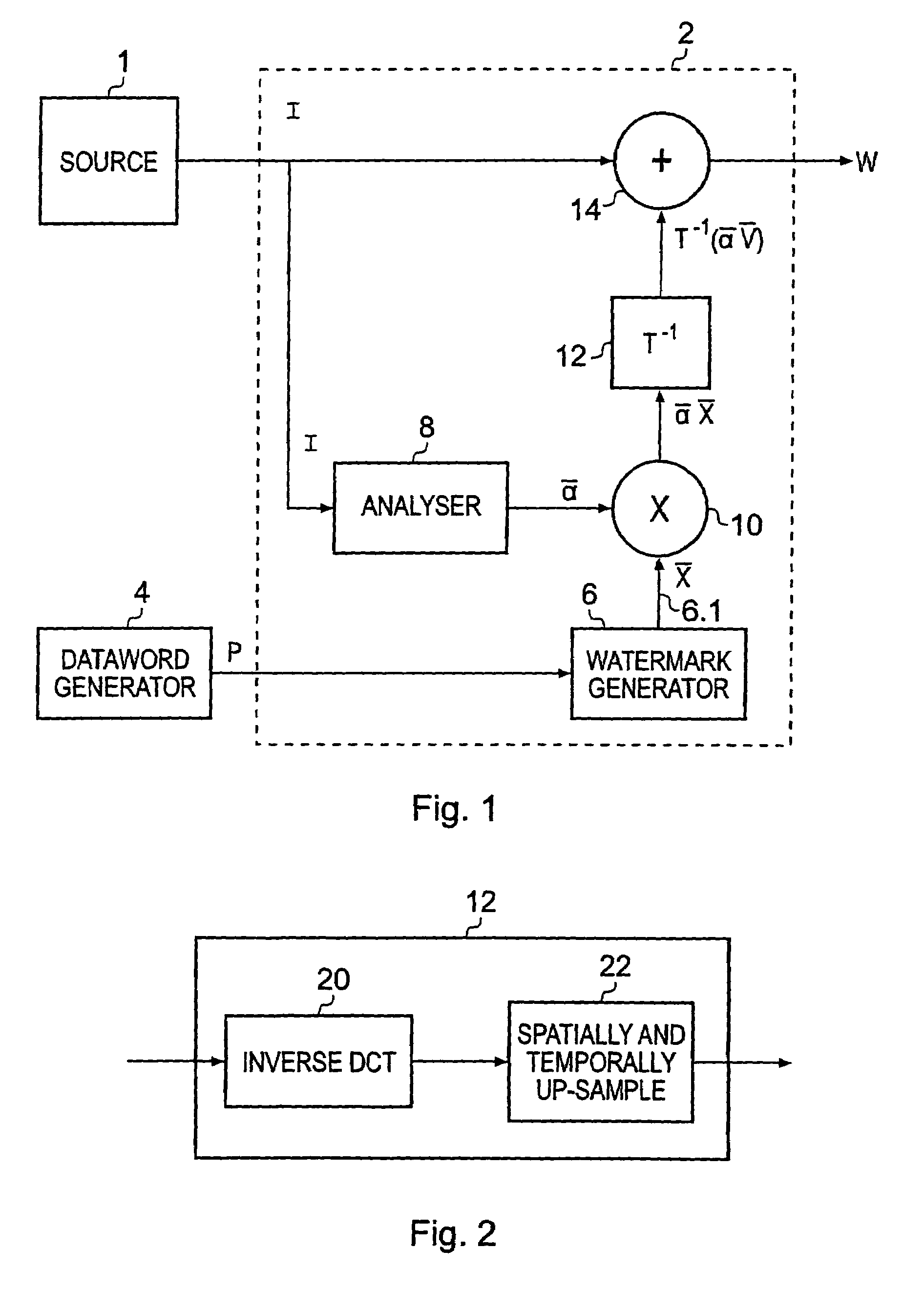Data processing apparatus and method
a data processing apparatus and data processing technology, applied in the field of data processing apparatus and method, can solve the problems of not always being able to reproduce an original copy of the image at the detecting data processing apparatus, and the pirate copy of the film may suffer some distortion
- Summary
- Abstract
- Description
- Claims
- Application Information
AI Technical Summary
Benefits of technology
Problems solved by technology
Method used
Image
Examples
Embodiment Construction
Water Mark Encoder
[0042]An encoding data processing apparatus, which is operable to generate water marked images by combining a water mark code word with the images, is shown in FIG. 1. The encoding data processing apparatus shown in FIG. 1 is arranged to combine the code word with the image to form the marked copy in a base band domain of the original image. In FIG. 1 images I are generated by a source 1 and fed to an encoder 2 which is arranged to combine payload data words P generated by a data word generator 4 so that at the output of the encoder 2 a marked copy W of the images I is formed. The encoder 2 shown in FIG. 1 includes a code word generator 6 which arranges the code word coefficients into a form corresponding to a transform domain representation of the image. Weighting factors are then generated by a perceptual analyser 8 in accordance with a relative ability of the image to carry the code word coefficients with a maximum strength whilst minimising a risk of the code w...
PUM
 Login to View More
Login to View More Abstract
Description
Claims
Application Information
 Login to View More
Login to View More - R&D
- Intellectual Property
- Life Sciences
- Materials
- Tech Scout
- Unparalleled Data Quality
- Higher Quality Content
- 60% Fewer Hallucinations
Browse by: Latest US Patents, China's latest patents, Technical Efficacy Thesaurus, Application Domain, Technology Topic, Popular Technical Reports.
© 2025 PatSnap. All rights reserved.Legal|Privacy policy|Modern Slavery Act Transparency Statement|Sitemap|About US| Contact US: help@patsnap.com



